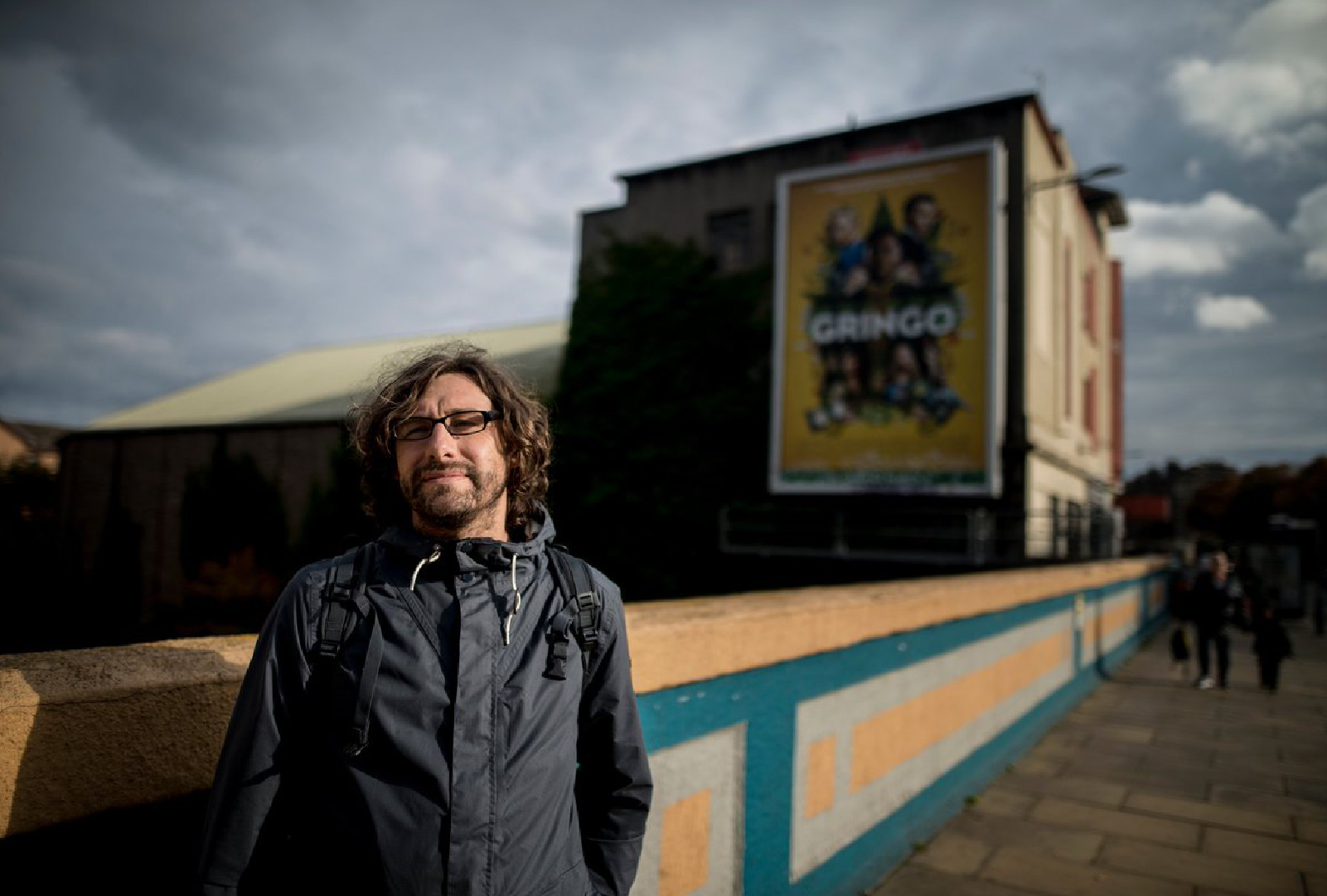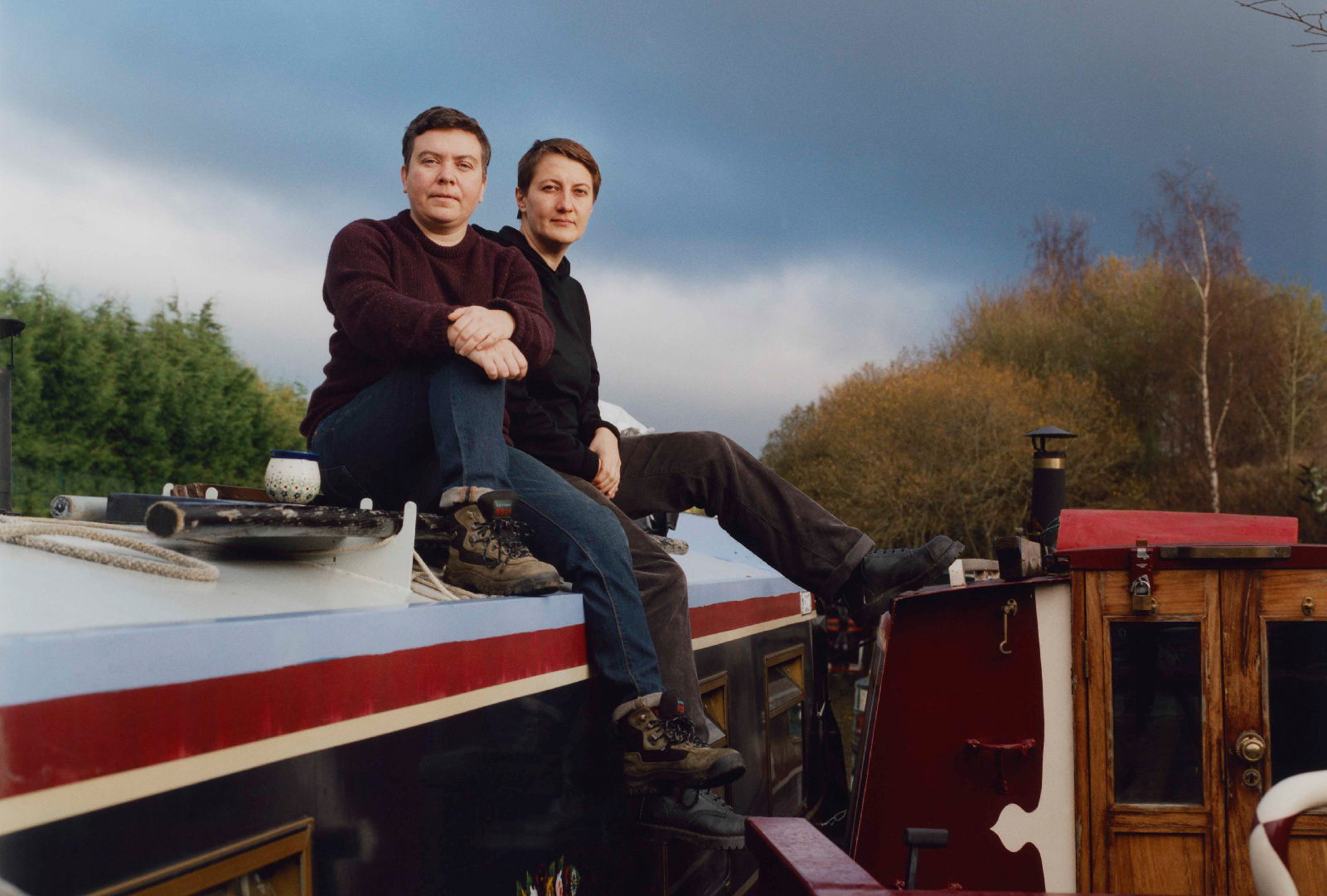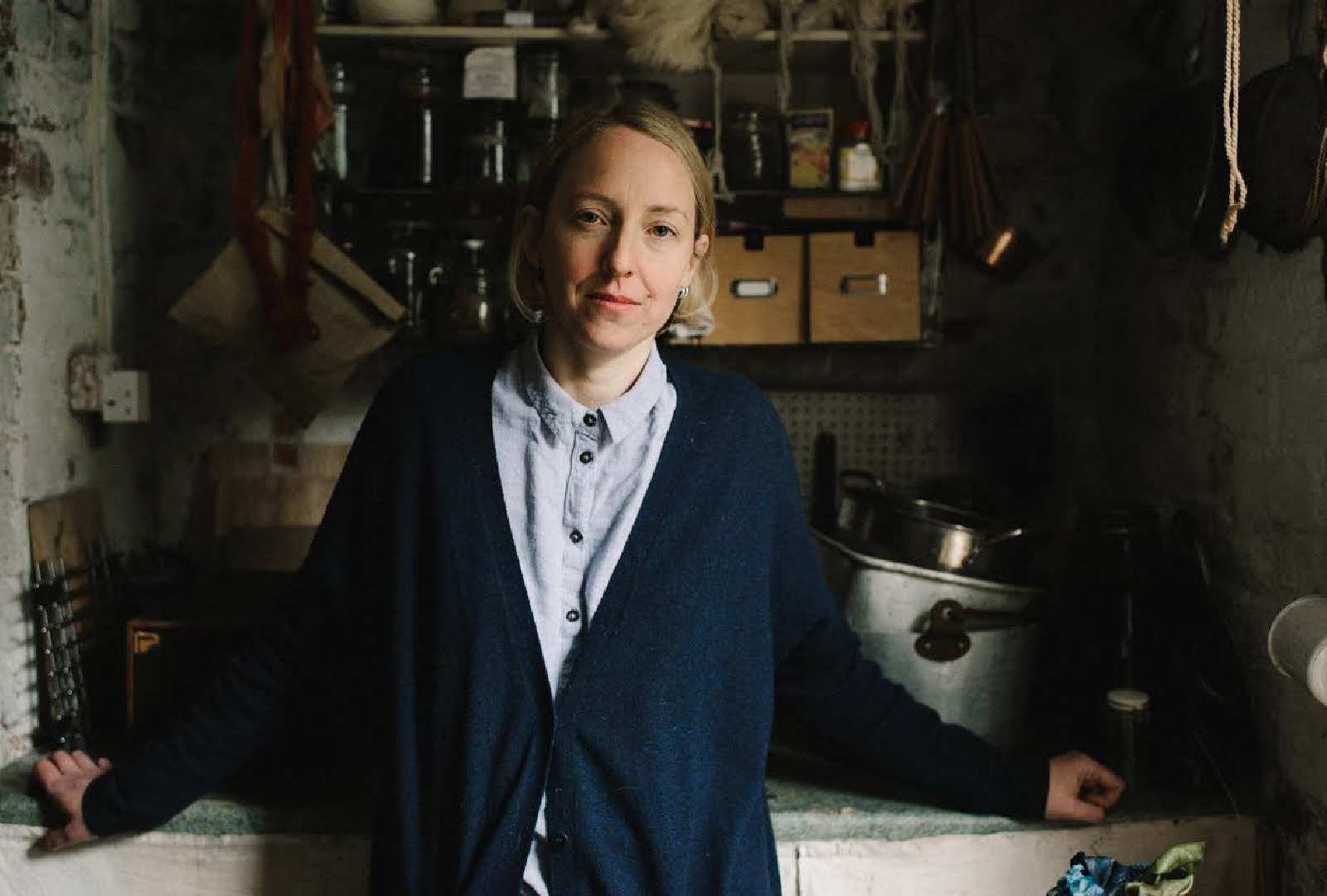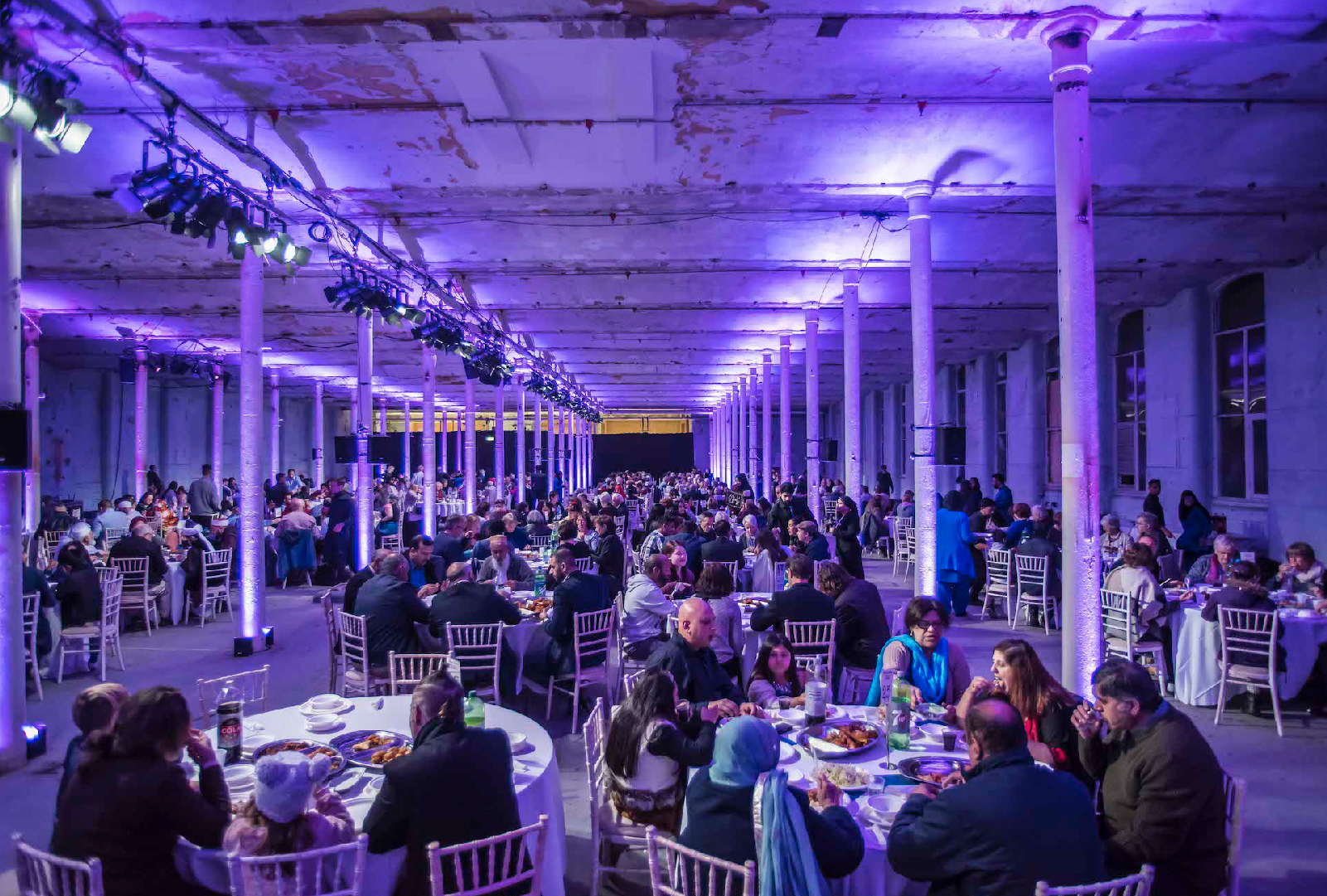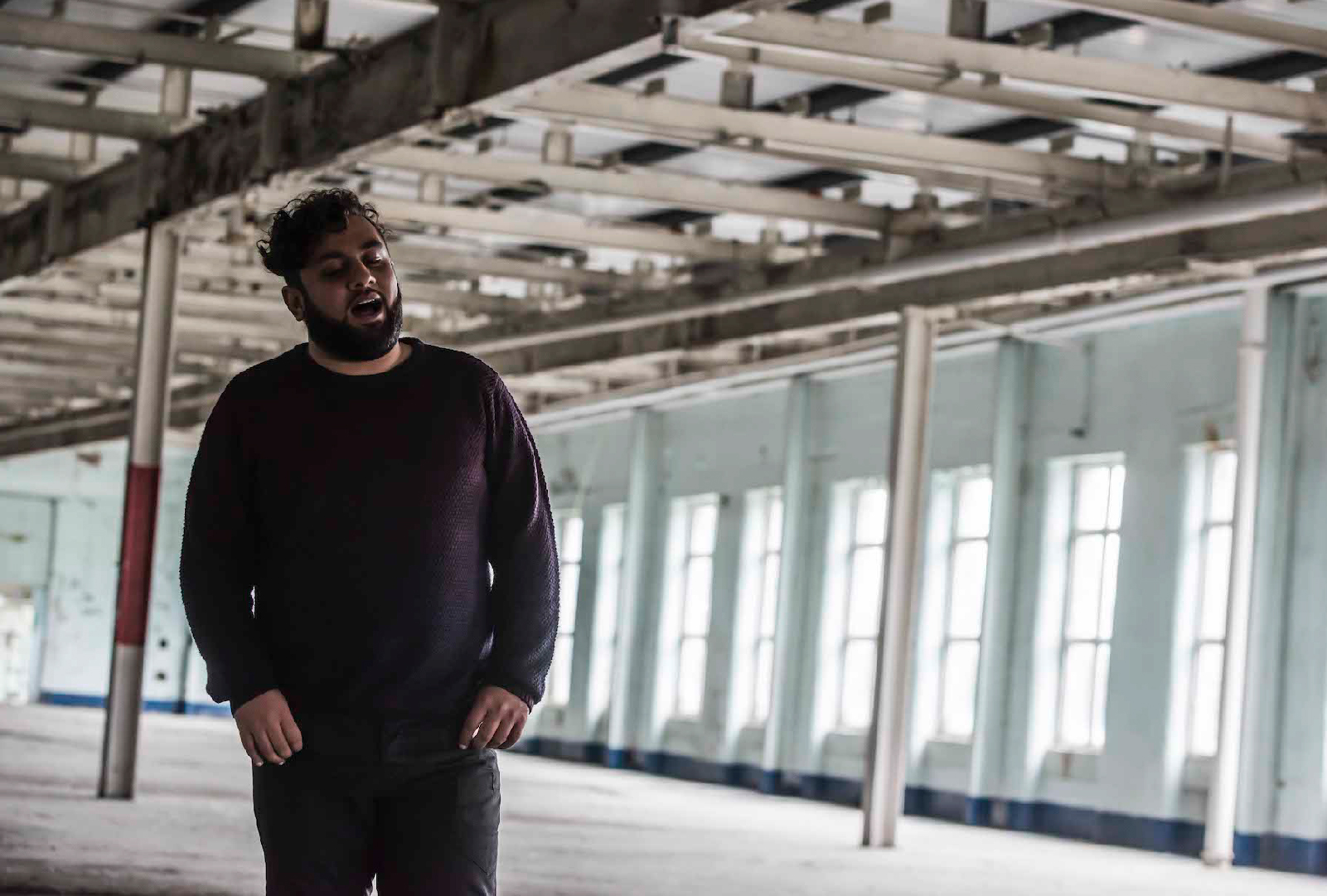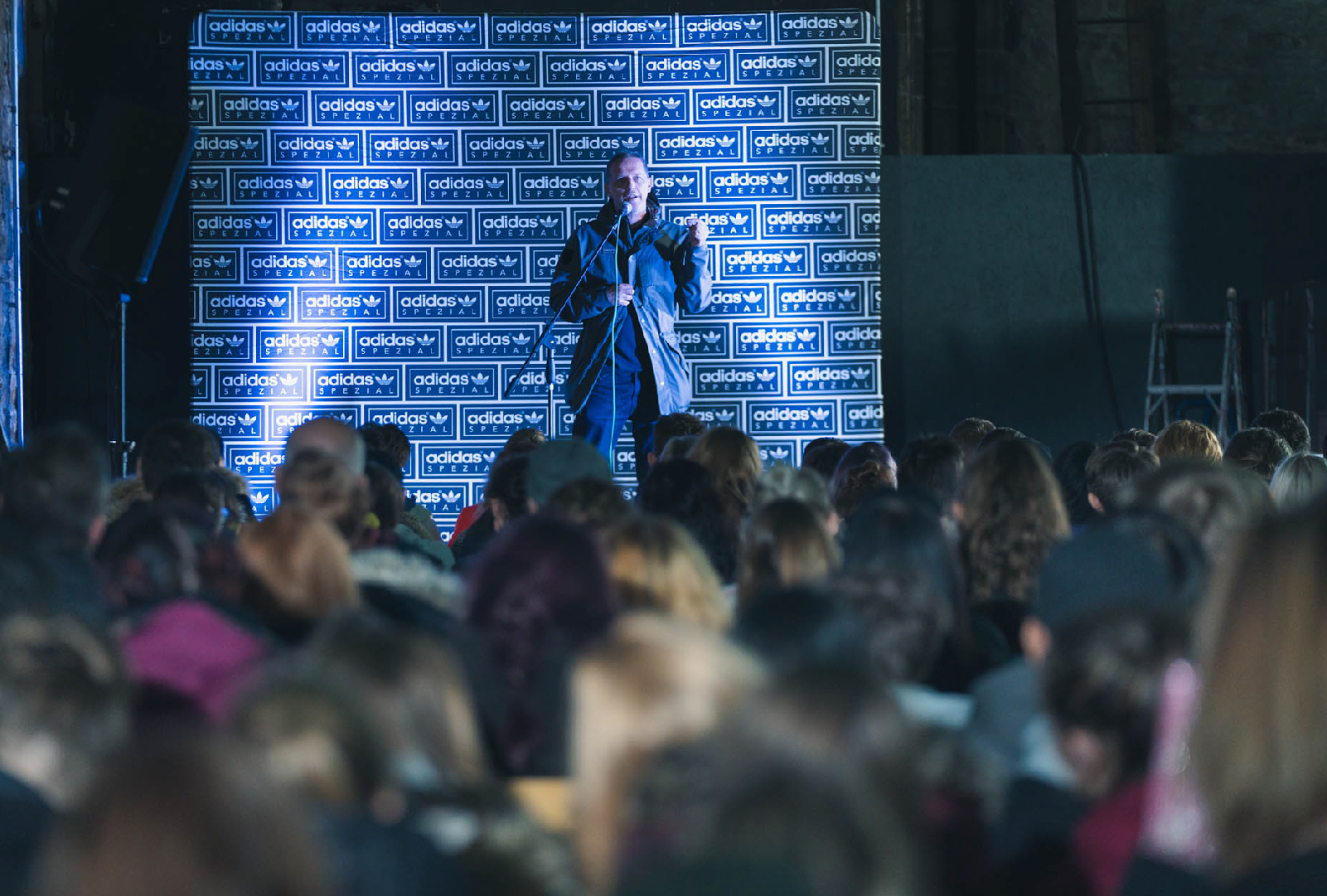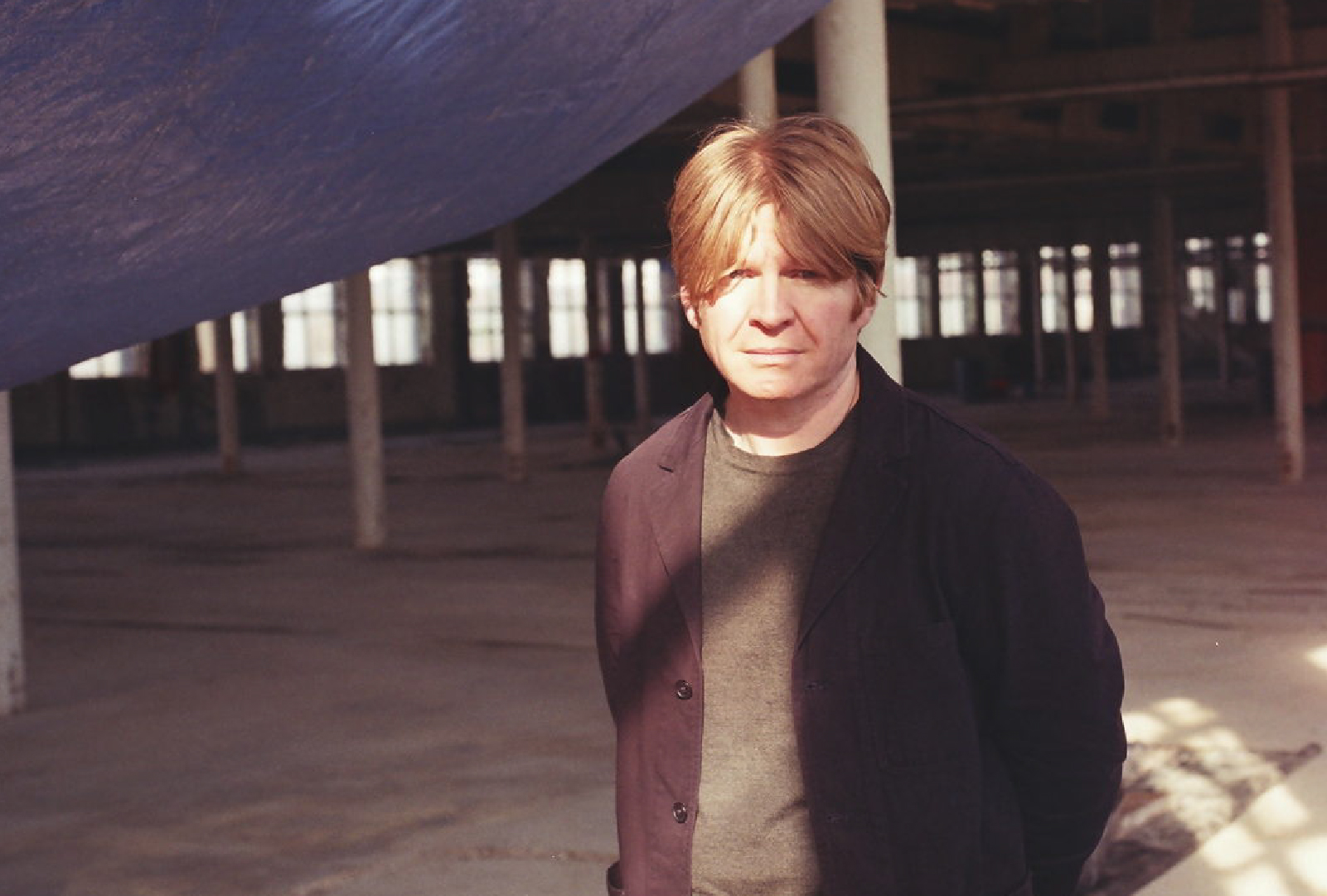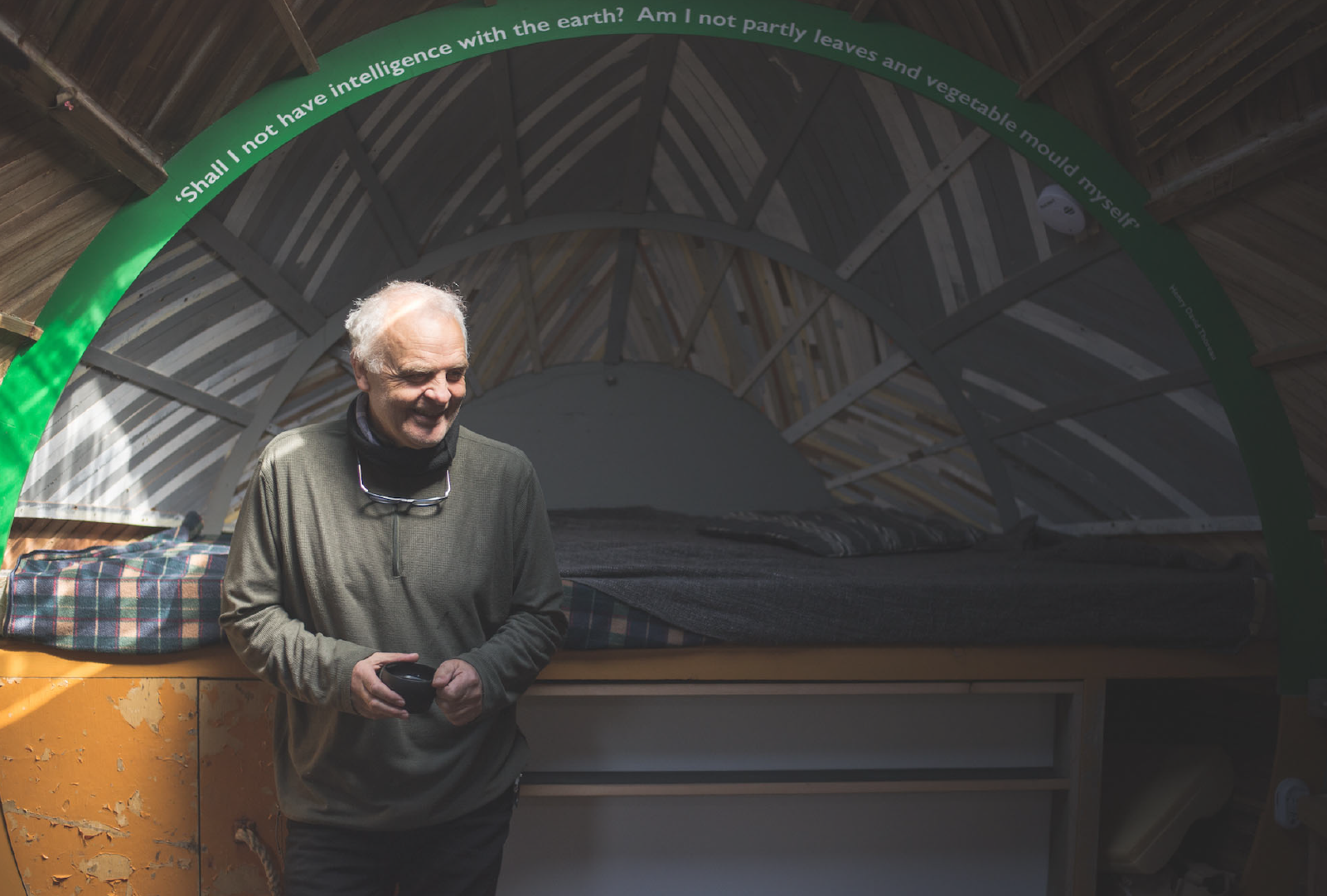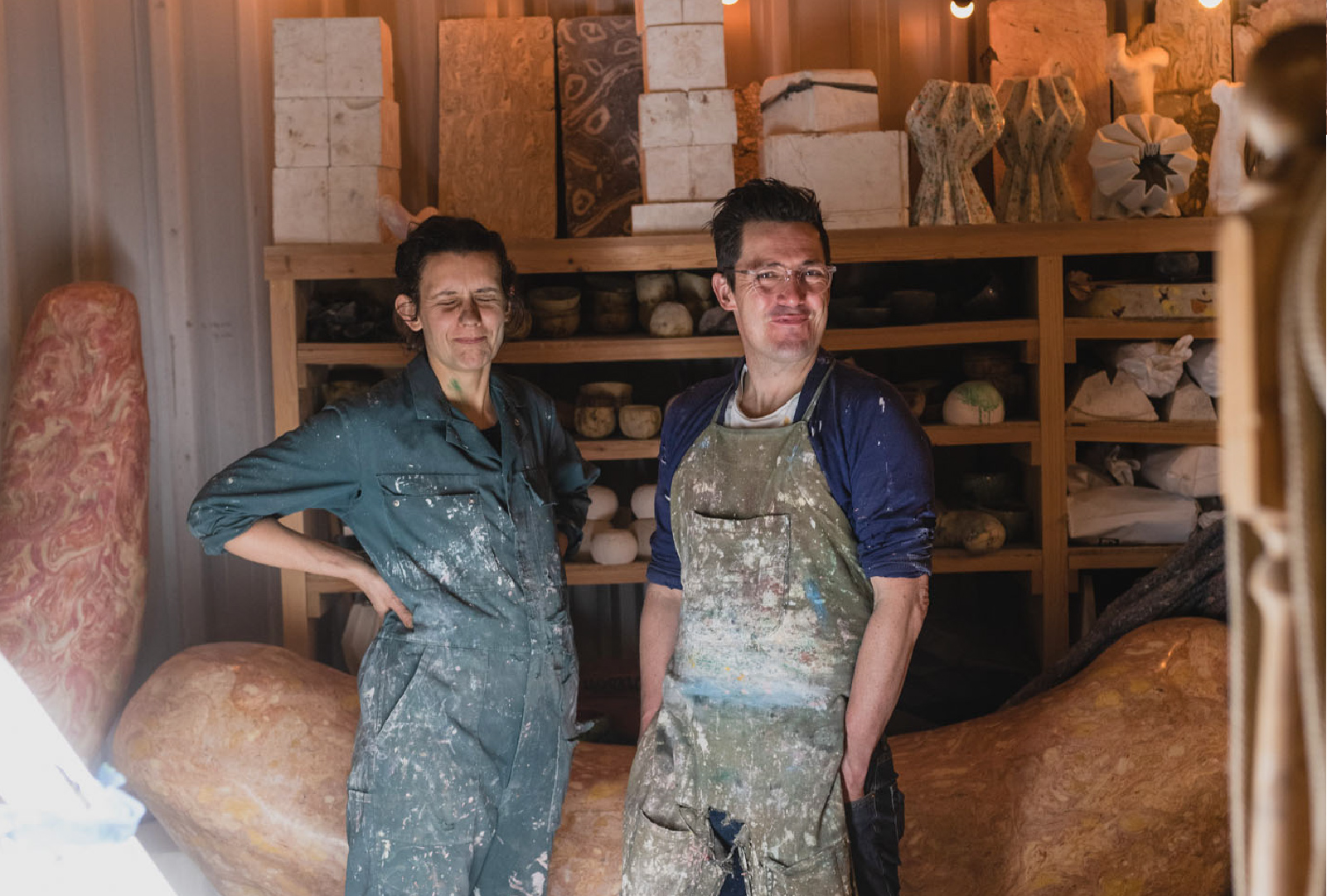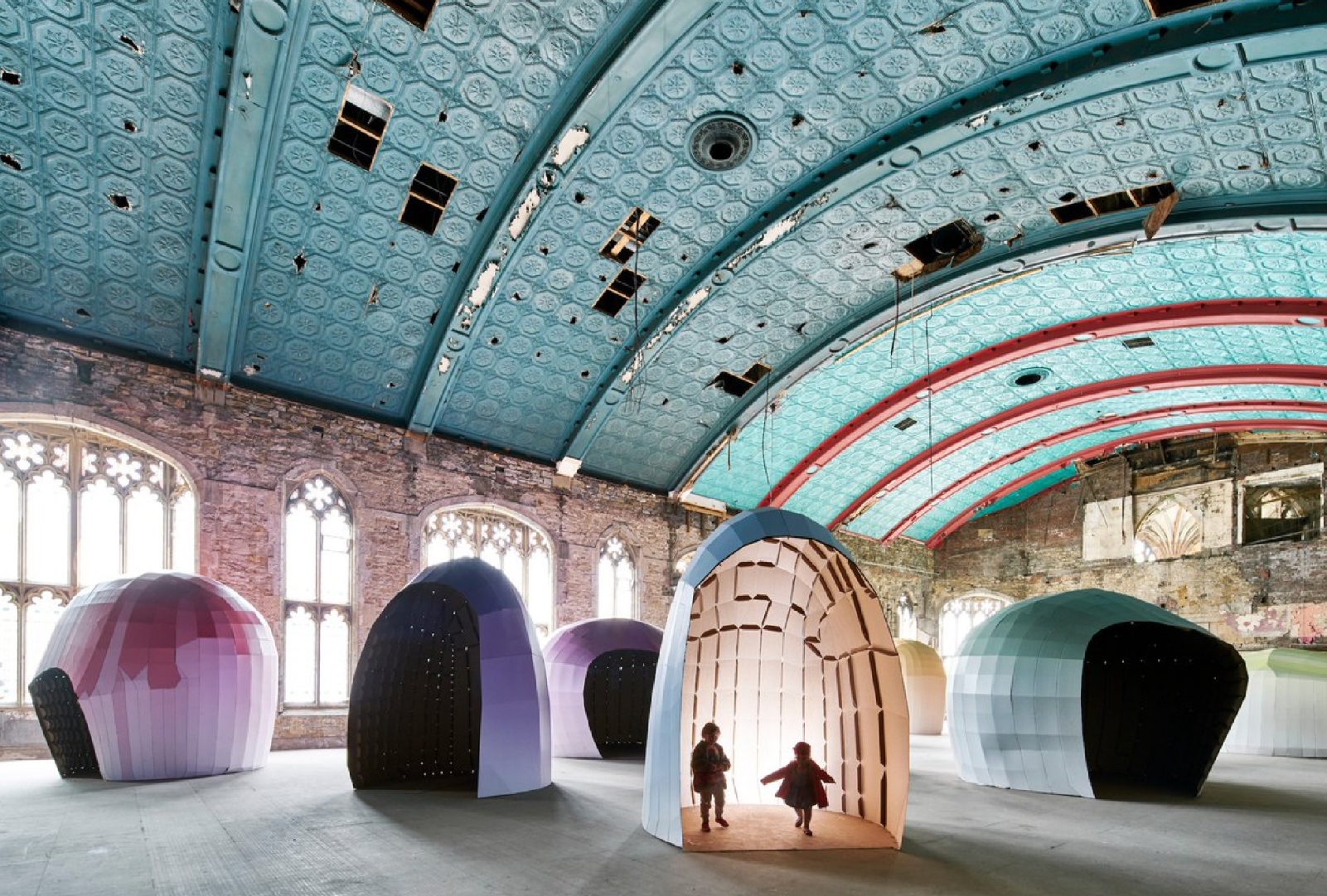Slowly Turning
The World
Upside DOWN:
AN ARTISTS’ CONVERSATION
Earlier this year we invited local artists and organisations who have worked with us over the past five years, many of whom had played a crucial part in bringing the programme here, to come together to reflect on where we are now. These are the creatives on the ground who have, through years of dedicated work and hard won relationships, laid the strong foundations in the places we work, often with them. The programme that has evolved over the ensuing time is, in many respects, very different from their original vision and has impacted them in unexpected ways. We are very grateful for their continued energy and support and would like to thank everyone involved in this conversation for giving us their time and sharing their knowledge, experience and opinions so generously and openly, captured here by our Critical Friend, Stephen Pritchard.

One Sixty cafe, Burnley
PHOTOGRAPHER jai redman
Being Part Of The Bid
Some participants had been involved with the bid to Creative People and Places which ended up with the formation of Super Slow Way: “a difficult process” that ended in “triumph” followed by “a brief window of time” during which “you think all your troubles are over”. In fact, the successful bid was “just the start of our troubles” with the local arts and cultural environment feeling like “the world turned upside down”. Those involved felt, momentarily, like they had a say but soon felt somewhat displaced, reverting to “being the small fish” in an enlarged cultural “pond”. Some local artists found it difficult at times to access the investment they thought would result from the bid.
The “big investment” in Super Slow Way’s programming came at a time when investment in other arts organisations in the area was stagnant and, in some cases, shrinking. The investment from Creative People and Places wasn’t going to compensate for cuts made to some elements of the existing arts and cultural infrastructure in the area. It was for something different.
Getting To Know The Super Slow Way
Some thought Super Slow Way would, from the start, offer support and deeper relationships to existing organisations and new start-ups. It had been “quite difficult to understand how to even apply for anything”; maybe tricky to access at times. Some organisations seemed to flourish more than others. “We didn’t feel we were ‘high art’ enough.” Some smaller local arts organisations had to “really fight for a place around [the] table”. But, once involved, organisations and artists had “benefited massively” from working with Super Slow Way, often gaining in confidence and being able to scale up. Some projects were “elevated to ‘high art’” status, travelling to biennials around the world. This “weird thing to navigate” would not have happened without investment from Super Slow Way and its undeniably strong “curatorial vision”. For some, this vision was one that “you are either onboard with or you’re not” – perhaps not as “collective” as it perhaps could have been. There is a fine line between leadership and collectiveness.

Super Slow Way appeared to have quickly become “the representative of the arts in this area” – the “go to place”. The area’s existing arts infrastructure was “disrupted”. Some felt they were no longer part of the conversation or had lost a degree of status
A New Voice for The Arts in Pennine Lancashire?
Super Slow Way appeared to have quickly become “the representative of the arts in this area” – the “go to place”. The area’s existing arts infrastructure was “disrupted”. Some felt they were no longer part of the conversation or had lost a degree of status: “We no longer get invited to things.” Super Slow Way had clearly created a higher level of representation and recognition of the local arts and cultural ecosystem. This was accepted as an “inevitable” consequence of the programme that was “fantastic for the area”, creating a sense of “regional representation” that had been previously absent. Super Slow Way’s curatorial vision brought “everything together” and “raised the bar” for arts and culture across Mid-Pennine Lancashire in ways that empowered people “to achieve things we would never otherwise be able to achieve”. Super Slow Way had, to some extent, succeeded in “building up the whole region”.
Not For The First Time
The local arts and cultural sector had worked together before Super Slow Way, attracting “significant investment” in the previous decade. Those involved were, however, unable to sustain the initial investment. There were fears that Creative People and Places funding would end at some point, falling foul of new organisations and new projects for new people in new places: “political funding” driving a constant churn in which money could disappear from an area or programme just as quickly as it came. This is a perennial problem for arts, culture and heritage programming. Short-term “strategic” planning that is often rather unstrategic. For example, Arts Council England’s designation of areas like Pennine Lancashire as “areas of low cultural engagement” could be interpreted as “areas of failure by the cultural sector”. This downplayed “a failure of investment, not a failure of the hard-working people.”
Being Strategic
Cultural strategy constantly shifts – or at least its language regularly changes and it’s important to be aware of what these shifts mean locally as well as nationally. Arts Council England’s new 10-year cultural strategy, Let’s Create, represents a fairly radical shift in emphasis, with an increased recognition of the strategic value of Creative People and Places programming. Might this signal new opportunities for the Pennine Lancashire arts sector? Some people hoped that Let’s Create might encourage a greater recognition of the grassroots work of local organisations that focus on participant experience rather than what might be perceived as a “high quality” aesthetic. “Excellence” is an important element of grassroots art. Should socially engaged practice be considered as a form of “high art”? Questions around policy and strategy and practice are always tricky. That is how it was, still is, and always should be. Things are never straightforward. Yet recognition and understanding are always important.
Being Recognised
The “moments that get recognised” do not always illuminate the lengthy processes that enable them to shine. Time is sometimes lost in glitzy “outputs” and“outcomes”. “The complexities of [our work] get lost,” because “we struggle to tell our stories”. Artists and organisations were not always able to tell their own stories. Yet perhaps excellence exists in how the complexities of practice and process are navigated and how intricately they are communicated? Some local artists have significantly developed with Super Slow Way’s support and graduates are slowly returning to the area. But the often-intimate practices that form the “bedrock” of Super Slow Way’s work have not always been communicated or presented in ways that celebrate complexity and subtlety. Did the British Textile Biennial do enough to reveal the nuance and background work behind the exhibitions and events? This “constant struggle” was not solely the responsibility of Super Slow Way, but of everyone involved. In-depth critical writing about Super Slow Way’s work was sometimes lacking, but that needs investment in a collective framework.

The structure and “constraints” of Creative People and Places sometimes encourage programmes to operate “in a transactional way” that ignore or underplay the complexities of relationship building
There are “Relationships” and Relationships
The structure and “constraints” of Creative People and Places sometimes encourage programmes to operate “in a transactional way” that ignore or underplay the complexities of relationship building: not least the time it takes to forge meaningful relationships. When relationships are perceived as transactions, it can irreparably damage the long-term relationships and trust built by artists and organisations very quickly, leaving them, not the Creative People and Places partnerships, to pick up the pieces. This intensive and consistent relationship-building process – the building, maintenance and development of relationships with people and communities–is often misunderstood and not considered “sexy”. Perhaps relationship-building is “not a very interesting story”? Perhaps it is a story that doesn’t need to be told? Perhaps it’s a story that can’t be told or shouldn’t be told? Yet UCLan’s (who undertake Super Slow Way’s evaluation) work to articulate the value of grassroots arts seems promising. Maybe ethnographic research about relationship-building in grassroots arts projects might serve to educate senior members of Arts Council England and Creative People and Places – people who may, “never having worked in this way – on the ground” fail to understand why investing in long-term relationship-building is essential?
“Art world hierarchies” persist. “Why aren’t we all sitting around a table discussing our areas of expertise like we are now … in a non-hierarchical way?” And does a perceived trend in recent decades towards a “sensational, fun presentation” of socially engaged practice tend to devalue grassroots work? Perhaps Super Slow Way are bucking this trend. “We’re really lucky to have Laurie in post” because “she really understands how long these projects take” while, at the same time, in a way that may appear contradictory, “she knows we need a higher profile”, to be super AND slow. Clearly, it is possible to blend a strong curatorial vision with an understanding that building relationships and helping communities to develop takes time. This type of work isn’t about either/ or. Super Slow Way’s programming attempts to be about and.

Clearly, it is possible to blend a strong curatorial vision with an understanding that building relationships and helping communities to develop takes time. This type of work isn’t about either/ or. Super Slow Way’s programming attempts to be about and.
British Textile Biennial
The British Textile Biennial was an overwhelming success: “a brilliant initiative” that was “just the right thing for this area”. The adidas exhibition was interesting, engaging “many middle-aged men” who would not normally go to arts exhibitions as well as attracting “significant media attention”. Problematic, maybe. But the biennial managed to gain the media’s attention: “It’s amazing to get places in Pennine Lancashire on the news with a positive story” and “that’s good for us all”. Yet it had taken an event like the British Textile Biennial to entice Arts Council England staff as well as other agencies such as the British Council and the Crafts Council to the area. This, apparently, has “always been the case”.
Big and Fast Not Super and Slow?
Super Slow Way has undoubtedly raised the profile of the area and its cultural sector, but the “big” and the “fast” productions still tend to receive most attention: the “slow” work is too often under-explained and therefore unacknowledged. The organisation’s long-term and deep attention to the artists and organisations doing grassroots work in the area was important to its success. A Creative People and Places project alone cannot “solve the sector problem” in Pennine Lancashire, or elsewhere for that matter. The area’s diverse population, very different communities, and complex patterns of inhabitation certainly make for challenging conditions. Here there is both closeness and isolation. These things are interconnected, with long and complicated histories.“There’s still a hell of a lot of people in Burnley who’ve never been to Blackburn and vice versa.”

Super Slow Way has undoubtedly raised the profile of the area and its cultural sector, but the “big” and the “fast” productions still tend to receive most attention: the “slow” work is too often under-explained and therefore unacknowledged.
Opportunities and Expectations
Early career artists and creative practitioners still find it difficult to work in Pennine Lancashire because many of the opportunities still go to people from outside the area. This is not necessarily a bad thing, however: so long as “outsiders” work with “insiders”, sharing knowledge and skills for everyone’s benefit. Super Slow Way’s funding advice sessions were invaluable in passing on experience. Its project management and curatorial skills helped some artists and practitioners develop “hugely” by “pushing ambitions” and providing paid opportunities that would otherwise “never have existed”. “As an individual practitioner, it’s magic … very, very supportive.” Being “part of a bigger thing” was obviously important to members of the arts community. Super Slow Way provides that structure and coherence. Yet there was a sense that early career artists and start-up organisations still needed more support. Perhaps its support could be expanded to explore apprenticeships in future programming?
Class
A perceived lack of adequate investment in supporting young people and new start-ups led to an apparent class disparity. It is important to understand the intersectionality of class in the twenty-first century. Class is the all-too-common elephant in so many rooms. This room was no different: the members of the conversation (myself included) white and relatively privileged. We were not representative of contemporary working-class people. Simply sitting in a vegetarian and vegan café talking about art and community signifies our privilege. Many quickly say how hard they are working “to engage people from different cultures”, but is this enough?
“I think, as a sector, we all have to take responsibility to address the lack of representation in our workplace, in our commissioning and in our projects.” Were quotas an answer to the “diversity problem”? For some, yes. “I’m a strong believer in setting quotas.” “We shouldn’t speak for other people … and the fact that we’re even having this conversation isn’t alright.” Challenging perspectives, inviting defensiveness. There shouldn’t be, but there is still a long way to go. The idea of quotas to ensure diversity is achieved is controversial and, indeed, is a form of positive discrimination. But perhaps they are needed and perhaps they could be tested in some of Super Slow Way’s future programming?
A Super Slow Future?
Can Super Slow Way help the local cultural sector look to the future? Might planning for opportunities like Lancashire’s bid for 2025 City of Culture help the area “rethink how we can get out of the mess that the industrial revolution has created”? What would SSW look like in 3 years’ time? “We need a shared legacy plan.” This planning should start now, with as many people as possible involved. There was uncertainty about what Super Slow Way might be like in 3- or 4-years’ time, but a clear understanding that its support and profile-raising capacity was invaluable to the local arts sector. “We don’t have access to those conversations, those people, those influencers, and Super Slow Way do.” This seems like a crucial function of Super Slow Way: as a connector with power and an amplifier of those feeling disempowered or little heard or misunderstood.
In an area that defines itself through a deeply ingrained sense of abandonment, Super Slow Way has been able to “fight our case in a way that we just can’t do ourselves, because we do not have the time or the resources”. But, if Super Slow Way did not continue, might the area’s arts sector be abandoned once more? “It takes more than 10 years of investment to deal with … deep rooted problems.” This is a question that goes beyond Super Slow Way and, indeed, Creative People and Places, to the heart of arts, culture and heritage strategy and policy nationally. Is it possible to really plan our futures when our artistic practices, our relationship-building and our attempts to support community development are seen by those in power as temporal “projects”?

Is it possible to really plan our futures when our artistic practices, our relationship-building and our attempts to support community development are seen by those in power as temporal “projects”?
Curry, Drinks and Chatter
The smells of vegan curry, the clangs of beer bottles and the chinks of wine glasses finally overpowered us.
The conversation ended. But it didn’t end. It continued around the stove and outside in the street.
And it still hasn’t ended. And nor should it end.
Super Slow Way were brave enough to create a safe space where artists and arts organisations could talk, agree and disagree. They want this to happen more frequently.
So, let’s do this again sometime soon…
WITH THANKS TO:
Kerris Casey-St.Pierre and Leonie Stephenson The Bureau, Paul Hartley In-Situ, Rob Howell Culturapedia, Nick Hunt and Melanie Diggle Mid Pennine Arts
Rachel Anderson Idle Women, Jai Redman, Fiona Hornby, Sophie Gibson, Jules Evans, Shona Ingram, Hannah Kay and Amanda Odlin UCLan.
Stephen Pritchard is an independent academic, researcher, community artist, activist, art historian, writer, curator, critical friend and filmmaker. He is co-organiser of the Movement for Cultural Democracy and co-founder of Art Not Arms, Artists Against Social Cleansing and the Socially Engaged and Participatory Arts Network.
Articles

